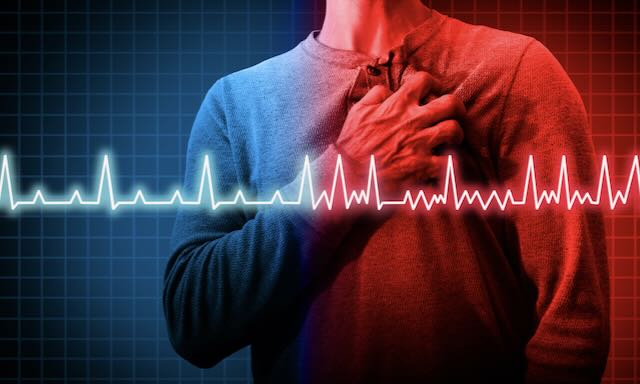
Vaccine damage to heart’s electrical system undetectable with standard autopsy
All HART articles also on Substack. Please consider a PAID SUBSCRIPTION so we can continue our work. Comments are open so you can join in the conversation.
Published with thanks to the person who tweets as @sborg40 for spotting this
A new paper (here) from pathologists in Kanazawa City, Japan reports the findings of an autopsy in a healthy 40-year-old man:
“A healthy 40-year-old Japanese man suddenly experienced tachycardia and lost consciousness 2 days after vaccination. Continued resuscitation recovered the spontaneous heartbeat; however, the patient did not regain consciousness and died 9 days later.
Electrocardiography after resuscitation showed marked ST-segment depression and incomplete right bundle branch block.
Influenza antigen and polymerase chain reaction tests for SARS-CoV-2 were negative.”
The key findings at autopsy were:
“At autopsy, several small inflammatory foci with cardiomyocytic necrosis were scattered in the right and left ventricles, with a propensity for the right side.
Some inflammatory foci were located near the atrioventricular nodes and His bundles. The infiltrating cells predominantly consisted of CD68-positive histiocytes, with a small number of CD8-positive and CD4-positive T cells.
In this case, myocarditis was focal and mild, as is mostly observed following COVID-19 mRNA vaccination. However, the inflammatory foci were close to the conduction system and were considered the cause of fatal arrhythmia.”
The most concerning aspect of this is that the myocarditis itself was “focal and mild, as is mostly observed following COVID-19 mRNA vaccination” yet this resulted in a fatal arrhythmia, because cells which are part of the electrical system were affected.
A secondary concern about this is that since this occurred after the 2nd dose, it seems likely the event happened several years ago, yet has remained unpublished in the meantime.
The possibility that inflammation affecting just the conductive system might result in fatal arrhythmia is a concern we have previously raised in relation to the mRNA products, see here and here for example.
It is to be noted that this man presented suddenly with an arrhythmia (ventricular tachycardia) which ultimately proved fatal; preceding chest pain characteristic of myocarditis was NOT reported. This is consistent with our concern that subclinical myocarditis, about which we have written extensively (see here), does indeed result in an increased risk of fatal arrhythmias, which may be responsible for most or all of the rise in ambulance callouts for cardiac arrests, which we have also written about. Subclinical myocarditis – defined as a rise in troponin indicative of some cardiac damage – has been found in at least 1 in 50 people injected with the mRNA covid injection in those studies where they have routinely looked for it.
Finally, it is worth pointing out that the small foci of inflammation affecting the conductive system which have been held responsible for this man’s death were only found by performing cardiac histological examination.
That is NOT something done routinely during post-mortems in the UK and presumably elsewhere, not least because it adds extra expense and also postpones the diagnosis – something pathologists don’t like doing for the sake of the relatives.
In fact, there is generally massive disincentivisation in the UK towards performing advanced testing on tissue. It is much easier to find some early cardiac atheroma (actually present in many middle-aged individuals) and put the death down to that.
It is, therefore, perfectly possible that inflammation similar to that found in this Japanese man has been missed in the post-mortems carried out on many people dying suddenly. Moreover, according to Hart’s co-chair, pathologist Dr Clare Craig, cardiac dissection to the level of detail required in order to ascertain how near these small areas of inflammation might be to the conductive system is a skill all pathologists are trained in, but one that most “jobbing” pathologists rarely practise.
